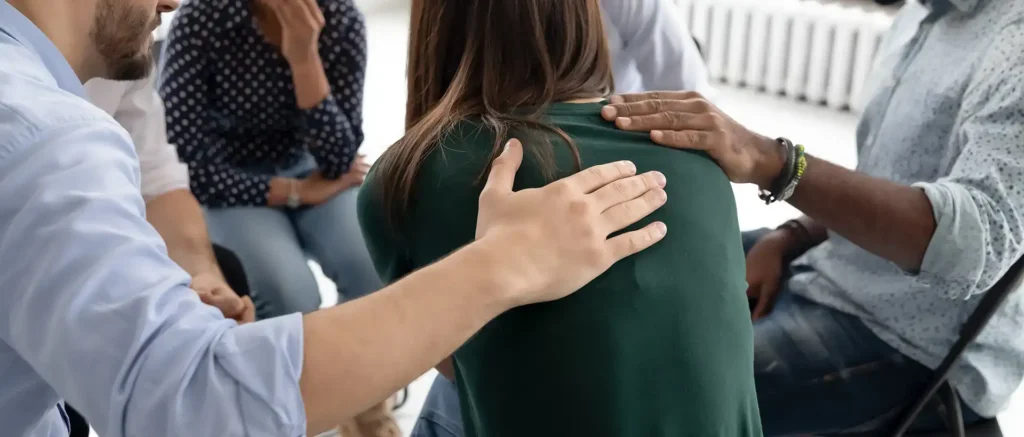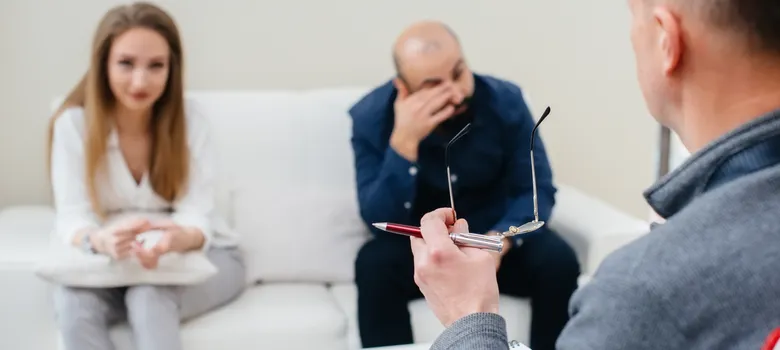
Cognitive Behavioral Therapy For Anxiety: How and Why It Works
Anxiety is one of the many emotions that people find difficult to control. A study shows that 61% of adults who felt stressed reported feeling anxious. While anxiety can be a normal response to perceived threat or danger, it can become overwhelming and begin to interfere with daily life. It is also common for anxiety to co-occur with addiction in what is called a dual diagnosis. Because of this, treatment centers must give clients access to both concerns.
Luckily, there is a widely recognized treatment approach called Cognitive Behavioral Therapy (CBT)to help manage anxiety symptoms.

What is Cognitive Behavioral Therapy?
Cognitive Behavioral Therapy (CBT) is the current gold standard of psychotherapy. It applies the principle that thoughts, emotions, and behaviors are connected, meaning what you think affects what you feel, and what you feel modifies how you behave. The goal of CBT is to identify cognitive distortions that can trigger anxiety and to change them into more rational ways of thinking.
Note that CBT is not only for individuals clinically diagnosed with anxiety disorders but also for those struggling with anxiety and who want to be more in control of their lives.
If you or someone you know is experiencing disruptive symptoms or is suspected of having an anxiety disorder, you may reach out for professional help.
How Is CBT for Anxiety Different From Other Forms of Therapy?
Unlike other therapeutic approaches that delve into past experiences or underlying conflicts, CBT focuses more on tackling present problems. It is a structured, often short-term treatment that enables quick and sustained improvements while retaining efficiency and accessibility. CBT helps individuals develop effective coping skills and strategies to solve problems and manage symptoms, potentially reducing the need for medication.
How Does CBT Work in Treating Anxiety?
Similar to other mental health conditions, CBT is typically conducted over a series of sessions, and its exact duration may depend on factors such as severity and duration of symptoms, rate of progress, external stressors, and level of social support.
CBT for anxiety begins with a thorough initial assessment in which you and your therapist determine specific counterproductive behaviors. A precise treatment goal and plan are then established to provide clarity and set expectations.
As the sessions progress, you will learn to recognize irrational thoughts that contribute to anxiety and emotional distress. These thought processes are challenged and reanalyzed throughout the therapy sessions to help manage and reduce anxious thoughts and behaviors.
Over time, harmful thoughts will lessen, and you will develop healthy coping mechanisms and problem-solving skills to apply outside therapy. The final stages of CBT involve reviewing the overall progress made and reinforcing the regular practice of new techniques acquired.

CBT Techniques for Anxiety
Psychoeducation
Anxiety psychoeducation is one of the core components of CBT that provides a comprehensive understanding of anxiety, including its psychological and physiological effects, potential risks, and practical strategies for managing it. This approach helps in gaining insight into the nature of anxiety and how it manifests, making it easier to recognize and handle.
Cognitive Restructuring
Cognitive restructuring in CBT works by identifying distorted thoughts and reframing them to be more balanced and realistic. For example, you can reevaluate an anxious thought about embarrassing yourself in public during a presentation by reminding yourself how you’ve done it before, that you’ve prepared well, and that nothing bad happened.
Challenging Thoughts
In CBT, challenging unhelpful thoughts involves questioning irrational beliefs by looking for sufficient evidence to support or contradict them. For instance, if you have a job interview and start feeling anxious about how it might go, you might think, “I will fail this interview, and I will never get hired anywhere else.” To challenge this thought, pause and ask yourself, “What proof do I have that this will happen?” Then, reconsider a different perspective: “If this one job won’t work out for me, it doesn’t mean I’m a complete failure. I have other opportunities in line, and I can keep trying.”
Exposure Therapy
Exposure therapy is one of the most commonly used CBT methods in treating anxiety, especially for specific fears and phobias. This step-by-step procedure involves gradually confronting feared situations to increase tolerance and build resilience until you feel less and less anxious. You’ll need to create a hierarchy of anxiety-provoking situations, thoughts, and feelings, starting with the least anxiety-inducing and then working your way up. Doing this with a therapist is highly recommended for a more controlled and safe approach.
Behavioral Activation
When individuals experience anxiety, they tend to avoid certain situations or activities to minimize the discomfort and fear associated with them. During CBT, you can create a plan with your therapist by setting attainable goals and slowly re-engaging with activities you once avoided. By creating a schedule and tracking your progress, you’ll eventually notice that the more you expose yourself to these activities, the less anxiety you experience, and the better your mood becomes.
Behavioral Experiments
A behavioral experiment is a CBT tool that tests thoughts and beliefs through real-life experiences rather than hypothetical scenarios. For example, suppose you feel anxious about answering a phone call and believe the conversation will only lead to embarrassment. In that case, you can test this prediction by answering a call from a family member. After that, evaluate whether the conversation was as embarrassing as you expected or if it went more smoothly. This process helps counter negative thought patterns by providing direct evidence that the fear is exaggerated and unrealistic.

Relaxation Techniques
Learning relaxation methods can help calm your nervous system and ease anxiety. These practices are easy to follow, and you can use them whenever necessary.
Progressive muscle relaxation is one technique that involves systematically tensing and relaxing different muscles in the body to promote both physical and mental relaxation. Find a quiet space free from distractions, take a few breaths, and then focus on tensing and relaxing different muscle groups one at a time. It typically starts at the lowest part of the body and works upwards through the thighs, abdomen, chest, shoulders, and face. Another useful relaxation technique is deep breathing, which can alleviate physiological anxiety symptoms such as rapid breathing, restlessness, or shaking, using slow, controlled breaths.
Journaling
Journaling, also known as thought recording, is a useful method for processing and organizing thoughts and emotions. By writing down what you think and feel, you can make self-monitoring easier and provide insights into triggers and underlying causes of anxiety. Free writing allows you to express yourself without judgment while promoting emotional awareness, enhancing coping skills, and reducing anxiety.
Getting Started with CBT
You can begin CBT by consulting a licensed mental health professional. This could be a counselor, psychologist, therapist, or social worker specialising in CBT. The therapy can be conducted in an individual or a group setting, either in person or online, depending on your preference.
In one-on-one sessions, you will work directly with a therapist to create a treatment plan tailored to your needs. On the other hand, group therapy offers an opportunity to connect with others who share similar struggles with anxiety, giving you additional support and a wider perspective of how anxiety can differ for each individual. Moreover, online therapy can offer more flexibility in case in-person sessions are inconvenient or not feasible due to certain circumstances.
Where to Get Help
Only about 1 in 4 people with anxiety disorders seek help despite the availability of highly effective treatments like CBT. If you’re exhausted from constant worry and fear without understanding the real cause, know that you’re not alone and help is within reach.
If you feel that anxiety is starting to affect your daily life, don’t wait – reach out for support today. At Twighlight Recovery Center, we provide a caring and compassionate environment for individuals struggling with addiction and anxiety.

